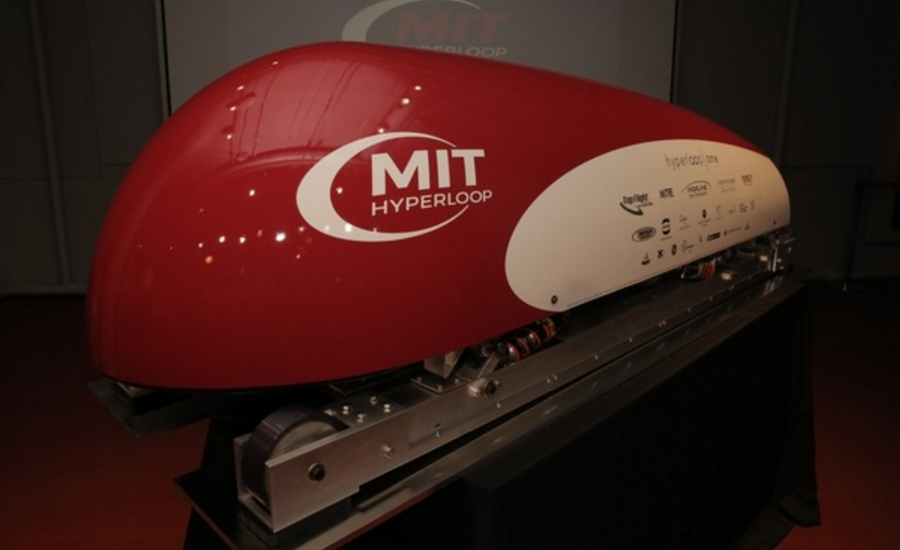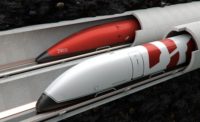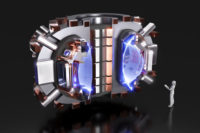MIT Makes Hyperloop Pod; Startup Does Propulsion Test

The first public demonstration of “the hyperloop,” a new propulsion system for high-speed transit, occurred on May 11 in the desert north of Las Vegas. Days later, a team of researchers unveiled a hyperloop test pod.
The hyperloop concept is to shoot cargo- and human-filled pods through low-pressure tubes at high speeds. Since Elon Musk, CEO of SpaceX, introduced the idea in 2013, several groups have started to work on making it a reality, including Hyperloop One (formerly Hyperloop Technologies).
That company shot a 1,500-lb aluminum sled along a 984-ft-long track using a linear electric motor that extended 187 ft along the track. The sled went from zero to 60 miles per hour in 1.1 seconds, stated Shervin Pishevar, Hyperloop One cofounder, in a blog post.
The longer the linear motor, the faster the propulsion, said Brogan BamBrogan, cofounder and CTO of Hyperloop One, in a public statement at the event. Once the linear motor is double the test size, it will have the capacity to fire the hyperloop capsule at 400 miles per hour, he said.
“What they’ll have by end of year is a full-scale Kitty Hawk event, where the tube is raised on columns,” says Andrew Liu, VP of new ventures at AECOM.
AECOM has fingers in every hyperloop pie, Liu says. The firm is slated to build a mile-long test track for a SpaceX- sponsored pod-design contest and is in talks with Hyperloop Transportation Technologies, the other startup making strides.
“AECOM is doing a feasibility study of how to move freight and cargo from ports using hyperloop,” say Liu. He represents one of the many professions that are contributing to the future realization of hyperloop. “I think this is not just a project—it’s a movement,” says Liu. “You see financiers, engineers and architects pushing for this fifth mode of transportation.”
Add researchers to the list. A team from MIT came in first among 30 finalists and 115 entries for the pod-design contest. MIT recently unveiled a constructed version that is propelled by magnetic levitation.



